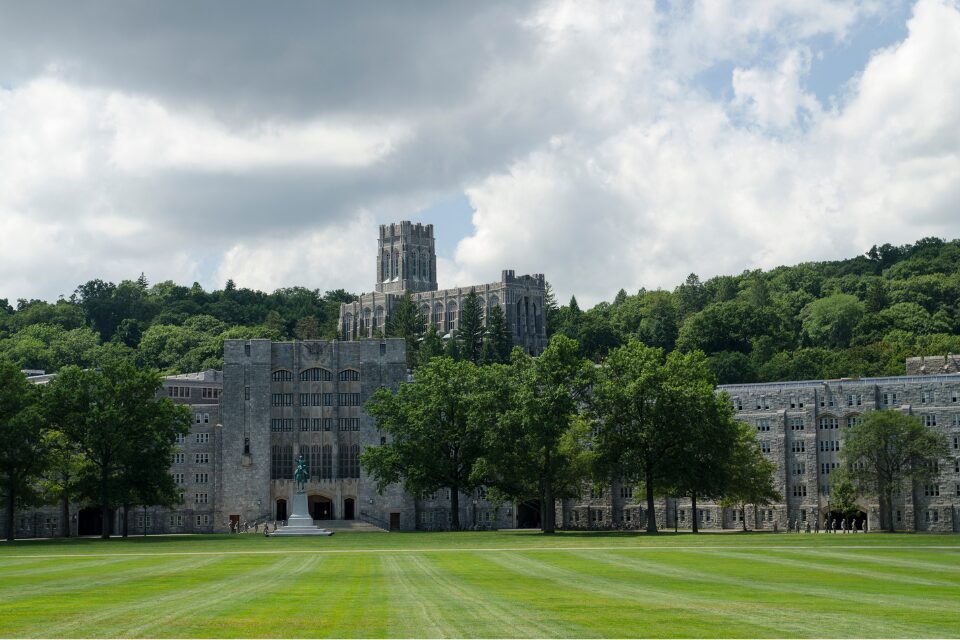Defense of civilian professors at the U.S. service academies

By Dr. William P. Leeman
Dr. Leeman is a professor in the Department of History and director of the Pell Honors Program at Salve Regina University. He is the author of “The Long Road to Annapolis: The Founding of the Naval Academy and the Emerging American Republic” and taught at the U.S. Military Academy at West Point from 2009-2011.
This article was originally published as a guest column in The Providence Journal, March 29, 2025.
During his confirmation hearing, Defense Secretary Pete Hegseth took aim at civilian faculty at the nation’s service academies. “We need more uniformed members going back into West Point, the Air Force Academy, the Naval Academy as a tour to teach with their wisdom of what they’ve learned in uniform instead of just more civilian professors that came from the same left-wing, woke universities that they left and then try to push that into service academies,” Hegseth said, responding to a question from Sen. Tommy Tuberville (R-Ala.), who had expressed concern over what he sees as the infiltration of liberal activism at the academies.
Hegseth’s comment diminishes the civilian men and women who teach at the academies. Just like the officer corps, the academies’ civilians come from varying backgrounds and espouse viewpoints across the political spectrum. Hegseth’s implication that civilian professors undermine the nation’s military readiness denigrates the significant contributions of civilian faculty to the professional development of our future military leaders.
Since its founding in 1845, the U.S. Naval Academy faculty has maintained a 50-50 ratio of civilian to military faculty. In contrast, the faculty at the U.S. Military Academy at West Point was composed almost entirely of commissioned officers for much of its history, with the U.S. Air Force Academy following the West Point model. This changed in the 1990s when Congress passed legislation to increase the number of civilian professors at West Point and the Air Force Academy, citing the need for greater academic rigor and intellectual diversity, which could be achieved by increasing the number of civilian faculty with doctorates.
Prior to this, most teaching at those institutions was done by officers with master’s degrees on three-year rotations. Today, the faculties at West Point and the Air Force Academy are composed of approximately 70% officers and 30% civilians, with the research output of those faculties increasing significantly since hiring more civilian professors. Also, all three military academies regularly achieve elite status in U.S. News & World Report’s college rankings.
At West Point, faculty are expected to strive for excellence in teaching, scholarship, cadet development, faculty development and service. Through teaching and research, civilian professors bring expertise in subjects vital to U.S. national security – in STEM fields, history, international relations, social sciences and foreign area studies (particularly, places like Russia, China and the Middle East where America’s interests require in-depth knowledge of those societies). This expertise is shared with next-generation military officers in academy classrooms daily.
Civilian professors often mentor officers teaching at the academy, helping to improve the quality of instruction. Some officers work on doctoral dissertations while they’re teaching and benefit from intellectual exchanges with civilian professors in their field. Civilians mentor cadets as thesis advisors, faculty advisors for clubs and faculty representatives for sports teams. Many civilian professors and their families sponsor cadets, providing a home away from home during their years at the academy. These bonds often continue long after graduation and commissioning.
The faculty structure in place at the nation’s service academies works. The combination of dedicated military and civilian faculty gives our nation’s future military leaders the best of both worlds. Officers on the faculty bring the knowledge and experience gained from their service in the operational military to the classroom, providing cadets and midshipmen with strong professional role models, while civilian professors bring the academic rigor gained from years of teaching and research.
One hopes that a glib, uninformed remark at a confirmation hearing doesn’t end up undoing a system of military education that has proven effective in producing young men and women ready to take on the challenges of military service in the 21st century.
Featured image by Getty Images/DepthofField

